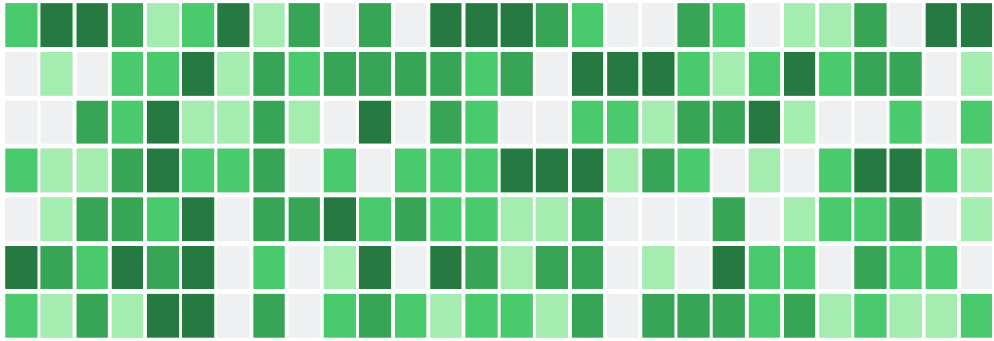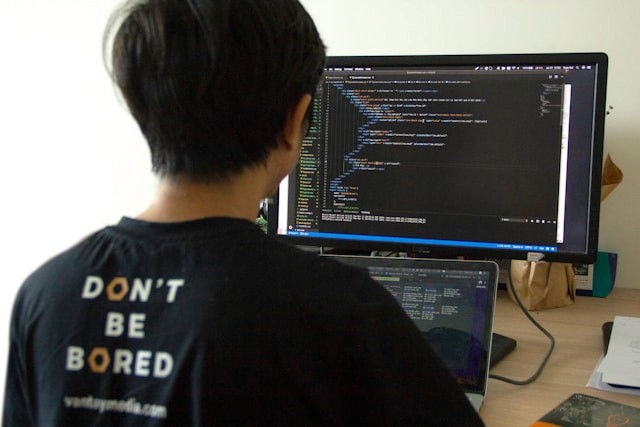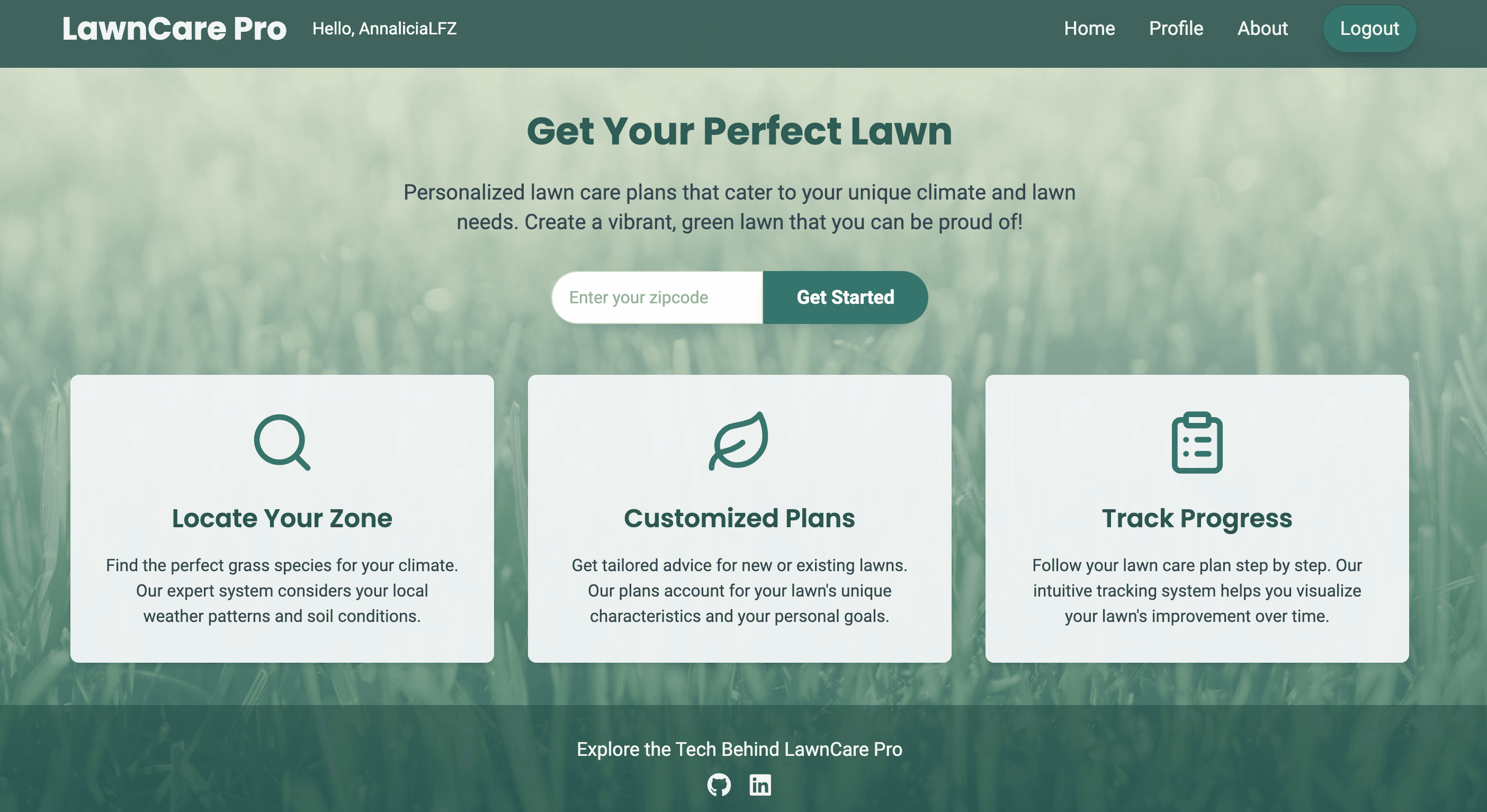How To Be A Programmer In 18 Weeks
Programming is not just a skill; it’s a superpower in today’s tech-driven world. Learning to code can unlock a world of opportunities, from creating websites and mobile apps to getting involved in data science and artificial intelligence.
In this comprehensive guide, we'll take you on a journey on how to be a programmer, equipped with essential knowledge and resources such as a coding bootcamp to accelerate your programming career.
The Value of Learning to Code
To get a better understanding of what it takes to be a programmer, let’s take a moment to understand why learning to code is such a valuable goal in today’s job market:
Endless Career Opportunities:
According to a report by the U.S. Bureau of Labor Statistics, the employment of software developers is projected to grow by 22 percent from 2020 to 2030, much faster than the average for all occupations, highlighting the increasing demand for skilled programmers in the tech industry.
Problem-Solving Skills:
Programming is essentially the art of solving problems using code. Learning to code enhances your ability to think logically, break down complex issues into manageable components, and develop systematic solutions—an invaluable skill set applicable to various aspects of life and career paths.
Creativity and Innovation:
Coding is not just about numbers and syntax; it’s a creative endeavor. As a programmer, you have the power to bring your ideas to life and contribute to the creation of innovative solutions that can impact millions of lives.
Remote Work Opportunities:
Programming often allows for remote work flexibility, enabling you to work from virtually anywhere in the world. This lifestyle choice offers unparalleled freedom and the opportunity to explore different cultures and locations while pursuing your career.
Learn how James, a LearningFuze graduate who is now working as a remote software engineer transitioned his career from teacher to tech progressional.
Continuous Learning:
Technology evolves at a rapid pace. Learning to code is not a do it once and you’re done situation. In order to be successful, you have to keep up with the latest technologies and innovations. This dynamic nature keeps the profession engaging and exciting.
Now that we’ve established the value, let’s walk you through how to be a programmer.
Step 1: Choose your path
Step 2: Learn the basics
Step 3: Build projects
Step 4: Network and collaborate
Step 5: Keep learning
Step 1: Choose Your Path
You have to choose your path when learning how to be a programmer. Programming is a vast field with diverse specializations, each offering unique opportunities and challenges. Before you dive into the world of coding, take some time to explore and decide which path aligns best with your interests and career goals. Here are a few popular options to consider:
Web Development
Web development involves creating websites and web applications that are accessible via web browsers. It’s a dynamic field where you’ll work with technologies like HTML (Hypertext Markup Language), CSS (Cascading Style Sheets), and JavaScript to build interactive and visually appealing websites.
Languages and Tools:
HTML: Used for structuring web content.
CSS: Used for styling web pages.
JavaScript: Used for adding interactivity and functionality to websites.
Frameworks and Libraries: Popular choices include React, Angular, and Vue.js.
Students choose the web development path for immediate impact, a high demand, and versatility with the ability to transfer skills to other programming domains.
While web development focuses on creating websites and web applications, mobile app development takes a different path, concentrating on crafting applications for smartphones and tablets.
Mobile App Development
Mobile app development involves creating applications for mobile devices such as smartphones and tablets. You can specialize in iOS app development (using Swift or Objective-C) for Apple devices or Android app development (using Kotlin or Java) for Android devices.
Languages and Tools:
Swift or Objective-C: Used for iOS app development.
Kotlin or Java: Used for Android app development.
Development Environments: Xcode for iOS and Android Studio for Android.
Students choose to specialize in mobile development for its growing market, user engagement potential, and monetization for personal projects.
Step 2: Learn the Basics
As you learn how to be a programmer, it’s time to lay the foundation by learning the fundamental concepts of programming. Regardless of your specialization, certain core concepts apply across the board. Here’s what you need to focus on:
Programming Languages:
Start by selecting a programming language that aligns with your chosen path. For web development, you’ll need to become proficient in languages like HTML, CSS, and JavaScript. If you’re interested in data science, learning Python is an essential language to master to analyze data quickly.
Algorithms and Data Structures:
Understanding algorithms and data structures is crucial, as they form the building blocks of efficient code. Books and online courses on these topics can provide invaluable insights.
Version Control:
Familiarize yourself with version control systems like Git. They allow you to track changes in your code, collaborate with others, and revert to previous states if needed.
Integrated Development Environments (IDEs):
Depending on your chosen language, explore IDEs that streamline the coding process. For example, Visual Studio Code is popular for web development, while PyCharm is favored among Python developers.
Step 3: Build Projects
By now, you’ve learned about choosing your programming path and acquired the basics, which is a significant achievement. However, the true magic of how to be a programmer lies in your ability to apply what you’ve learned and turn your knowledge into tangible creations.
That’s where step three comes into play: building projects. Building projects serves as a pivotal phase in your learning journey and helps you create a portfolio of work before you start searching for a job.
Application of Knowledge
Projects provide a practical platform for you to apply the programming concepts you’ve learned. Instead of merely understanding theory, you’ll be actively using your skills to solve real-world problems.
Skill Development
Practical experience is the best teacher. Through projects, you’ll refine your coding skills, learn new techniques, and become proficient in troubleshooting and debugging—an essential aspect of programming.
Portfolio Development
As you complete personal and student projects, you’re essentially creating a portfolio that showcases your capabilities to potential employers or collaborators. A portfolio is an invaluable asset when you’re seeking job opportunities or freelance work.
Creativity and Innovation
Projects offer you the creative freedom to bring your unique ideas to life. Whether it’s a website, a mobile app, a game, or a data visualization tool, your projects reflect your creativity and problem-solving abilities.
Confidence Boost
Successfully completing projects boosts your confidence. It’s a tangible demonstration that you’re making progress and how to be a programmer.
Types of Projects to Consider
The projects you choose to work on can vary widely based on your programming path and interests. Here are some project ideas for different programming specializations:
Web Development:
Personal Website: Create your own website to showcase your portfolio and blog about your programming journey.
Mobile App Development:
Task Management App: Create a mobile app that allows users to manage tasks, set reminders, and track their productivity.
Data Science:
Data Analysis Dashboard: Develop a dashboard that displays insights from a dataset, making data-driven decisions more accessible.
Game Development:
Puzzle Game: Design a puzzle-solving game with levels of increasing difficulty.
DevOps:
Automated Deployment Script: Write a script to automate the deployment of a web application on a server.
Full-Stack Development:
Chat Application: Build a real-time chat application with features like user authentication and private messaging.
Cybersecurity:
Security Information and Event Management (SIEM) System: Build an SIEM system for monitoring and analyzing security events.
Remember that the complexity of your projects can vary depending on your skill level. It’s perfectly fine to start with simpler projects and gradually move on to more challenging ones as you become more confident and experienced.
Tips for Successful Project Building
To ensure your project-building experience is productive and fulfilling you should plan your projects, break them down, embrace challenges, collaborate and seek feedback, document your work, showcase your projects, and iterate and improve.
Plan Your Projects: Before you start coding, plan out your project’s features, functionalities, and goals. Having a clear roadmap will keep you focused.
Break It Down: Divide your project into smaller, manageable tasks. This makes the development process less overwhelming and allows you to track progress.
Embrace Challenges: Don’t shy away from challenges. Learning often happens when you encounter and overcome difficulties during a project.
Collaborate and Seek Feedback: If possible, collaborate with others on projects. Collaborative work exposes you to different perspectives and skills. Also, seek feedback from peers or online communities to improve your projects.
Document Your Work: Keep thorough documentation of your project, including code comments and a README file. Documentation is essential for explaining your project to others and for future reference.
Showcase Your Projects: Once completed, add your projects to your portfolio, GitHub, or personal website. Share them with potential employers or clients to demonstrate your skills.
Iterate and Improve: Even after completing a project, revisit it from time to time to make improvements or add new features. This demonstrates your commitment to ongoing learning and improvement.
Building projects is not only an essential part of how to be a programmer but also a fulfilling one. It’s where you’ll witness your skills evolving and where your creativity can truly shine. So, pick a project idea that excites you, roll up your sleeves, and start coding. The journey of a thousand lines of code begins with a single keystroke!
Step 4: Network and Collaborate
Building a robust network and engaging in collaborative efforts within the programming community can greatly enhance your learning experience and open doors to valuable job opportunities. Here are some effective ways to connect with fellow programmers:
Attend Meetups: Local programming meetups and tech events are excellent opportunities to meet like-minded individuals, exchange knowledge, and discover emerging trends. These gatherings often feature presentations, workshops, and networking sessions that can expand your horizons and provide insights into different aspects of the field. To find and attend meetups, use platforms like Meetup.com, Eventbrite, social media, and local tech communities, or seek recommendations from colleagues and professional organizations in your field.
Join Online Communities: Online forums, social media groups, and specialized platforms like GitHub provide platforms for programmers to interact and share expertise. Participating in discussions, asking questions, and offering your insights in these digital communities can foster valuable connections and expose you to diverse perspectives.
Collaborate on Open-Source Projects: Contributing to open-source projects is a fantastic way to refine your coding skills, gain experience, and work alongside experienced developers. Open-source communities are welcoming environments where programmers collaborate on shared projects, making it an ideal space to grow and learn, while also expanding your professional network within the industry you hope to enter.
At LearningFuze, you’ll find a nurturing and supportive community that includes students, alumni, and experienced instructors. This network can serve as a valuable resource for expanding your programming abilities, receiving guidance, and discovering potential career opportunities. By actively engaging in networking and collaboration, you can tap into the collective knowledge and experience of the programming world, accelerating your growth as a programmer.
Step 5: Keep Learning
The last step in our guide on how to be a programmer is to keep learning because adaptation is the key to success. Staying abreast of emerging technologies and trends is crucial to maintaining your relevance and expertise. Here’s how you can ensure your programming skills remain sharp and up-to-date:
Attend Conferences: Regularly attending industry conferences and tech gatherings exposes you to the latest innovations, best practices, and networking opportunities. These events offer invaluable insights into the direction of the field and allow you to connect with experts and peers alike.
Take Online Courses: The internet is teeming with online courses and platforms where you can deepen your knowledge and acquire new skills. Enrolling in these courses provides a flexible way to learn at your own pace, ensuring you’re equipped with the most current programming techniques and tools.
Read Industry Blogs: Keeping an eye on industry-specific blogs and publications is an excellent way to stay informed about recent developments and noteworthy projects. Subscribing to tech news and programming blogs can provide daily doses of inspiration and knowledge.
At LearningFuze, our commitment to your growth as a programmer extends beyond your initial education. We offer ongoing support and resources tailored to our alumni, allowing you to sustain your learning journey and remain competitive in the ever-evolving tech landscape.
Becoming a proficient programmer is a journey that demands dedication and continuous learning. Whether you’re a newcomer to the field or seeking to advance your career, LearningFuze is here to provide guidance, resources, and community support to help you realize your programming ambitions. With the right resources and determination, anyone can unlock the world of coding and thrive in this exciting and constantly evolving field.
Additional Resources
You might like these

December 5, 2024
Here’s why those little green squares on GitHub matter, how they can impact your growth as a programmer, and how LearningFuze can help you get them.

December 11, 2024
Essential LinkedIn tips for junior developers: Boost your profile, leverage endorsements, and network effectively for career success in tech!

March 6, 2024
Discover your roadmap on how to become a web developer. Understand the fundamentals like HTML, CSS, and JavaScript as your gateway to a flexible and lucrative career.






